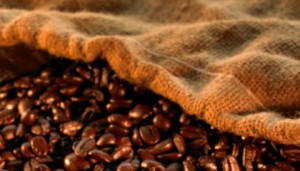 Roasting coffee beans dramatically changes both their physical and chemical properties. It’s how raw green coffee beans are transformed into delicious roasted coffee products. The roasting process produces the unique aroma and flavor of coffee by altering the color, taste, smell, and density of freshly-picked coffee beans. Unroasted beans contain the same basic mix of acids, proteins, and caffeine as those that have been roasted, but their taste is very different. Heat is required to cause the chemical reactions (such as the Maillard reaction) that bring out the incredible flavor of roasted coffee.
Roasting coffee beans dramatically changes both their physical and chemical properties. It’s how raw green coffee beans are transformed into delicious roasted coffee products. The roasting process produces the unique aroma and flavor of coffee by altering the color, taste, smell, and density of freshly-picked coffee beans. Unroasted beans contain the same basic mix of acids, proteins, and caffeine as those that have been roasted, but their taste is very different. Heat is required to cause the chemical reactions (such as the Maillard reaction) that bring out the incredible flavor of roasted coffee.
Green coffee beans are more stable and easier to ship than roasted beans. For that reason coffee roasting tends to occur close to where the coffee will be brewed and consumed. By reducing the time that roasted coffee spends in distribution, its shelf life is maximized. Most coffee is roasted commercially but some coffee connoisseurs prefer to roast their beans themselves in order to have more control over the freshness and flavor profile of the beans.
As a coffee bean heats up, its color shifts to yellow and then to various shades of brown. Towards the end of the roasting process oils condense on the surface of the bean, giving it a shiny appearance. The bean will continue to turn darker and darker until the heat source is removed. Lighter roasted beans tend to have more “origin flavor” — flavor that’s created by the weather, climate, and soil of the area where they were grown.
As the roasting process is ending, coffee beans are usually cooled using a vacuum system or a fine mist of cool water. The vacuum or “air cooling” method is considered to be far superior than the water or “quenching” method in terms of preserving the flavor and freshness of the beans. After the beans have been cooled and stabilized in a process calling “degassing” they are usually packaged in air and light-resistant foil bags. These bags are often fitted with special aromalock valves which allow gasses to escape while still protecting the beans from oxygen and moisture.
There are several different roast levels and variations of roasted coffee. The light roasts include cinnamon roast, half city, and New England variations. The medium roasts include full city, American, regular, brown, and breakfast variations. The full roasts include high, Continental, Italian Espresso, and Viennese variations. French roast is a very dark “double roast” variation that is quite popular is some parts of the world.


